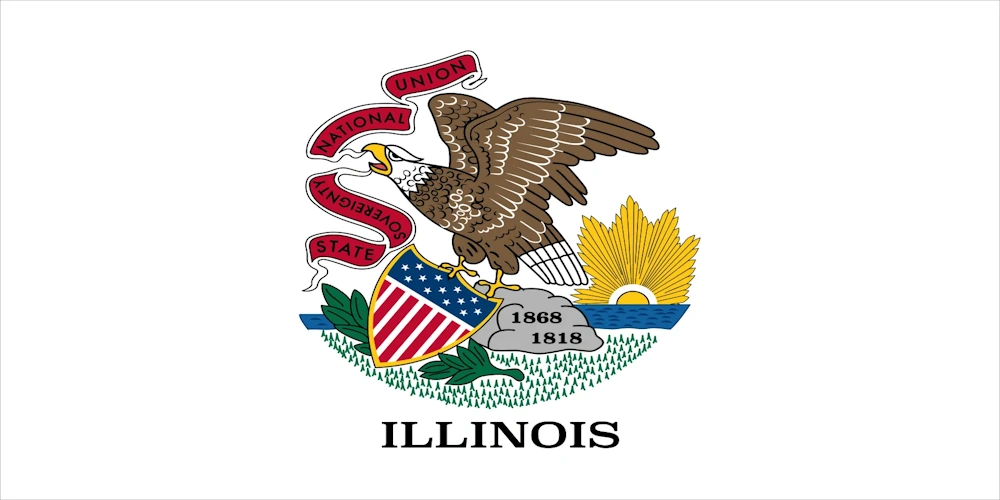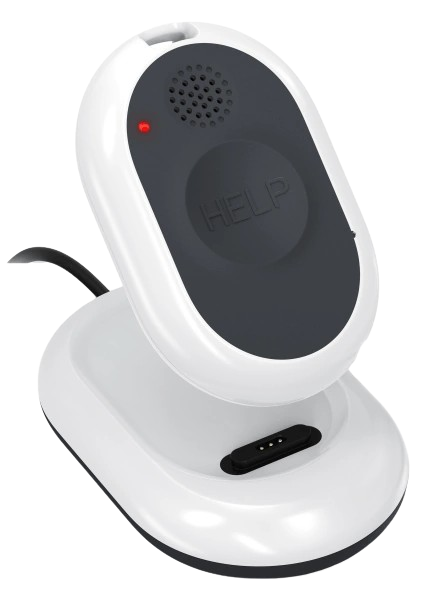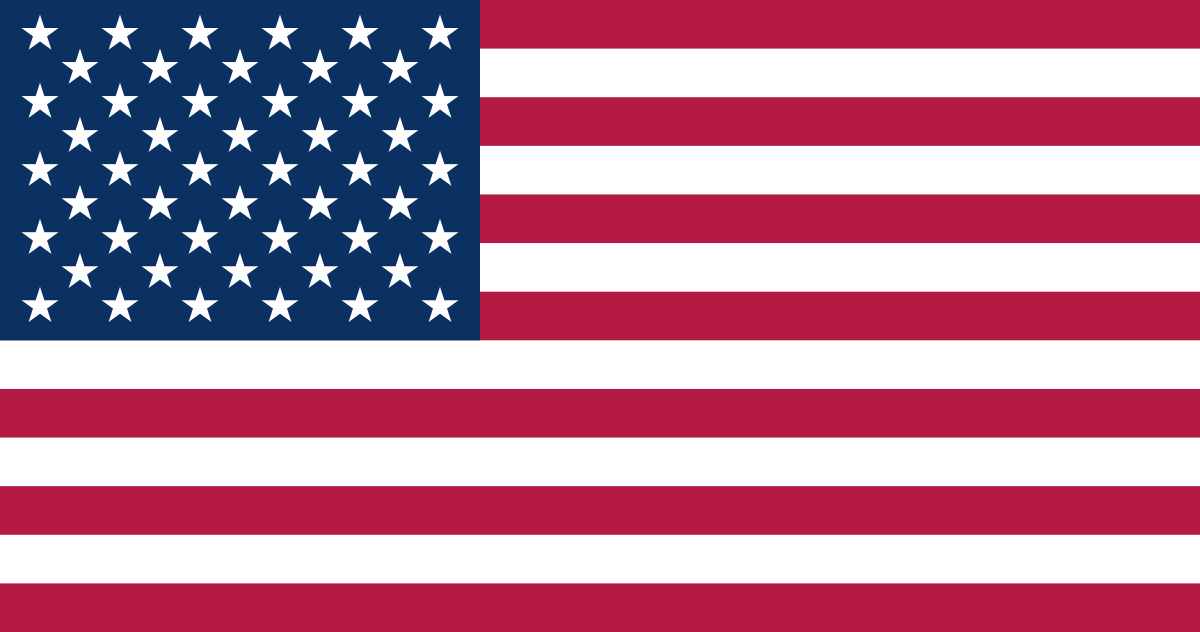Lone workers play a vital role in many of Illinois’ key industries, including healthcare, hospitality, agriculture, and utilities. From a delivery driver in Springfield to a night-shift hotel cleaner in Chicago, employees working alone often face increased safety risks due to the lack of direct supervision or immediate assistance. Illinois is regulated under federal OSHA, but the state has also taken steps to enhance protections for lone workers, particularly in the hospitality industry.
Notably, Illinois passed the Hotel and Casino Employee Safety Act (S.B. 75) in 2019, requiring hospitality employers to provide safety devices and procedures to protect employees working alone in guest rooms or isolated areas. This legislation underscores the state’s growing focus on ensuring lone worker safety.
This guide explains how lone worker safety is addressed in Illinois and provides practical steps employers can take to fulfill their responsibilities.
On This Page
Our Guide To Lone Worker Safety Policy And Legislation In Illinois
While Illinois does not operate a state-specific OSHA plan, employers must adhere to regulations enforced by federal OSHA. OSHA’s General Duty Clause mandates that all workplaces be free from recognized hazards, which includes the risks faced by employees working in isolation. Employers in Illinois must evaluate lone working conditions and implement safeguards to reduce these risks.
In addition to federal OSHA requirements, Illinois has introduced industry-specific protections. The Hotel and Casino Employee Safety Act (S.B. 75), signed into law on August 9, 2019, requires hotels and casinos to provide panic buttons or notification devices to workers—such as housekeeping and maintenance staff—who may be vulnerable when working alone in guest rooms or secluded areas. This law also mandates clear anti-harassment policies and response protocols, strengthening protections for some of the most at-risk lone workers in the state.
How Illinois Defines A Lone Worker
While Illinois does not provide a legal definition of “lone worker” outside of specific legislation like S.B. 75, the term generally refers to any employee who works without direct supervision or colleagues nearby. These workers may be unable to call for help quickly if they experience an emergency.
Common lone worker roles in Illinois include:
- Housekeepers and custodial staff in hotels and casinos
- Healthcare providers and in-home aides
- Utility and field service technicians
- Warehouse or maintenance workers after hours
- Agricultural employees in remote areas
- Security guards on solo shifts
Recognizing which employees are working alone is the first step toward reducing the risks they face.
Employing A Lone Worker In Illinois
Employers in Illinois have a duty to protect lone workers from foreseeable harm, both under federal OSHA law and, in specific industries, under state legislation such as the Hotel and Casino Employee Safety Act. This responsibility includes risk assessment, emergency preparedness, and training tailored to the unique challenges of isolated work.
Best practices for lone worker safety include:
- Conducting Risk Assessments: Identify where and when lone work occurs and evaluate the hazards.
- Establishing Communication Protocols: Use regular check-ins, panic buttons, and mobile safety devices to maintain contact.
- Training and Emergency Response: Equip employees with the knowledge and tools to manage emergencies independently.
- Using Monitoring Technology: Employ devices or apps that enable real-time tracking, fall detection, and distress signaling.
- Complying with Industry-Specific Laws: For hospitality employers, ensure compliance with S.B. 75 by providing safety devices, clear policies, and rapid response systems.
Proactively managing lone worker safety can reduce workplace injuries and support legal compliance.
Learn How You Can Protect Your Employees With Loneworker.com

With Loneworker.com you can be equipped with the knowledge and the means to protect your employees and protect your business. Contact us today to learn more about how Loneworker.com can protect you and your employees.
How The Safe Lone Worker App Can Protect Illinois Lone Workers And Employers
With its wide range of industries and environments—from Chicago high-rises to remote farmland—Illinois employers benefit greatly from digital safety tools. The Safe Lone Worker app is designed to support real-time employee monitoring with features such as GPS tracking, automatic check-ins, panic alerts, and fall detection.
This is especially valuable in sectors affected by S.B. 75, such as hotels and casinos, where staff working alone need instant access to help. The app also provides added protection for field workers, healthcare professionals, and security personnel across the state.
Illinois Lone Worker Policies
Illinois does not operate a state-level OSHA plan, so workplace safety falls under the jurisdiction of federal OSHA. Although there are no comprehensive state regulations exclusively targeting lone workers, employers are still required under the General Duty Clause to maintain a safe working environment for all employees, including those working alone.
Employers across all sectors are advised to assess the specific risks their lone workers face and take appropriate measures to mitigate them. For the most current legal requirements, consult OSHA’s website and the Illinois General Assembly. This guide is for informational purposes only and is not a substitute for legal advice.
Illinois Lone Worker Resources
OHS Contact Centre
- 1-866-415-8690
CDC / NIOSH
- 800-232-4636

Affordable Monitoring For Lone Workers In Illinois

-
 Monitoring Your Employees' Safety
Monitoring Your Employees' Safety
-
 GPS Tracking And Monitoring
GPS Tracking And Monitoring
-
 Man Down Panic Alerts
Man Down Panic Alerts
-
 24/7 Protection Anywhere
24/7 Protection Anywhere
Lone Worker Legislation
Lone Worker Safety Policies And Legislation By State
-
 Alabama State Safety Policies And Legislation
Alabama State Safety Policies And Legislation
-
 Alaska State Safety Policies And Legislation
Alaska State Safety Policies And Legislation
-
 Arizona State Safety Policies And Legislation
Arizona State Safety Policies And Legislation
-
 Arkansas State Safety Policies And Legislation
Arkansas State Safety Policies And Legislation
-
 California State Safety Policies And Legislation
California State Safety Policies And Legislation
-
 Colorado State Safety Policies And Legislation
Colorado State Safety Policies And Legislation
-
 Connecticut State Safety Policies And Legislation
Connecticut State Safety Policies And Legislation
-
 Delaware State Safety Policies And Legislation
Delaware State Safety Policies And Legislation
-
 Florida State Safety Policies And Legislation
Florida State Safety Policies And Legislation
-
 Georgia State Safety Policies And Legislation
Georgia State Safety Policies And Legislation
-
 Hawaii State Safety Policies And Legislation
Hawaii State Safety Policies And Legislation
-
 Idaho State Safety Policies And Legislation
Idaho State Safety Policies And Legislation
-
 Illinois State Safety Policies And Legislation
Illinois State Safety Policies And Legislation
-
 Indiana State Safety Policies And Legislation
Indiana State Safety Policies And Legislation
-
 Iowa State Safety Policies And Legislation
Iowa State Safety Policies And Legislation
-
 Kansas State Safety Policies And Legislation
Kansas State Safety Policies And Legislation
-
 Kentucky State Safety Policies And Legislation
Kentucky State Safety Policies And Legislation
-
 Louisiana State Safety Policies And Legislation
Louisiana State Safety Policies And Legislation







